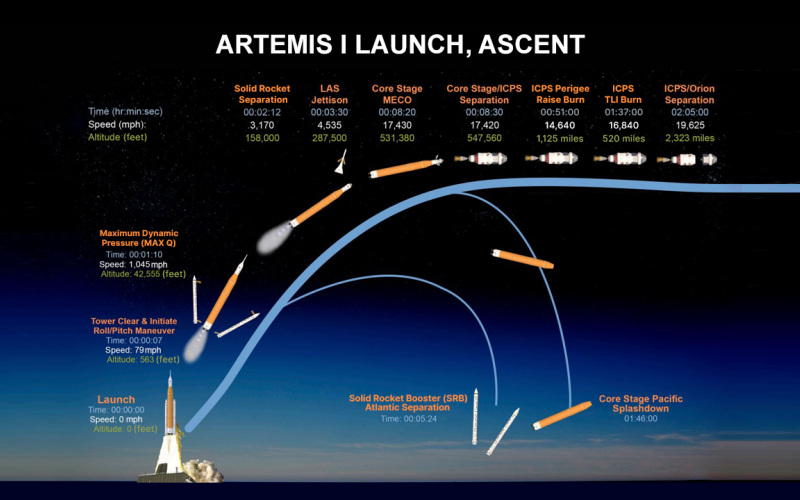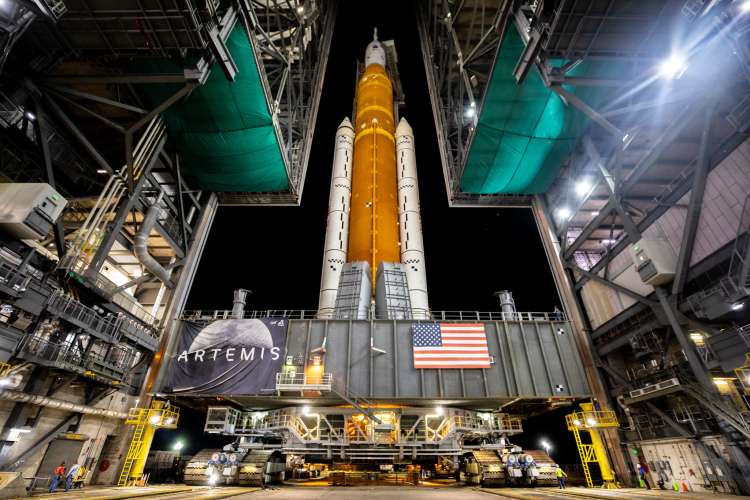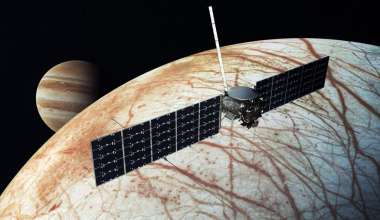The Apollo 11 Moon landing in 1969 was a watershed moment in human history, not just with regards to space exploration, but as a defining moment that captured the hearts and imaginations of people across the world. For many, Apollo 11 offered a glimpse into a future of spectacular possibilities, and the decades of technological progress that have transpired since Neil Armstrong’s first small step have made a return to the Moon a seemingly predestined and potentially transformative leap for humanity.
Artemis is an international effort, led by NASA, that aims to return astronauts to the lunar surface by 2025, making way for eventually expanding human space exploration to Mars. The Artemis I mission marks a major milestone for the Artemis mission series, and The Aerospace Corporation is proud to be contributing its unparalleled depth and breadth of technical expertise in support of this ambitious endeavor.
Artemis I is the first in a series of increasingly complex missions and will be a flight test of the Space Launch System (SLS) rocket that will send the uncrewed Orion spacecraft on a flight around the Moon.
“Aerospace has been working closely with NASA since the beginning in support of the development of NASA’s launch, spacecraft and ground systems,” said Martha Hess, Principal Director of the Human Exploration and Spaceflight division. “We are excited and thankful to have played a role in helping our nation achieve human exploration goals and return humans to the lunar surface and on to Mars.”

The Most Powerful Rocket Ever Built
Artemis is groundbreaking in many respects: The SLS will launch the Orion spacecraft farther than any spacecraft built for humans has ever flown and in its Block 1B configuration, will be the largest rocket ever created. The Orion spacecraft, designed to withstand travel beyond the Moon, will remain in space longer than any previous vehicle for astronauts without docking with a space station. Furthermore, the Orion spacecraft will return to Earth faster than previous spacecrafts and will require a higher threshold of heat resistance.
Designed to carry both astronauts and supplies on a single mission, the SLS will be used to accomplish subsequent Artemis missions, which will include transporting the first woman and the first person of color to the Moon. Aerospace is supporting multiple essential components of the Artemis I mission, the success of which will demonstrate the feasibility of human deep space exploration and permanently raise the bar for future space missions.
“While the increased capability of the SLS over previous launch vehicles is game-changing, the true scale of the SLS is challenging to capture unless you’ve seen it in person,” said Ben Bycroft, Senior Project Leader of Aerospace’s Vehicle Engineering department. “Standing at the base of the SLS, looking up and realizing that it’s twice as tall as other current vehicles is pretty awe-inspiring.”
The SLS has been designed specifically for missions beyond low-Earth orbit carrying crew or cargo to the Moon and beyond. Propelled by a pair of five segment boosters, four core stage engines, and the Interim Cryogenic Propulsion Stage (ICPS) the SLS represents the next generation of launch systems, requiring intensive design certification and review for all of its blocks and stages. To accomplish this, an Aerospace team dedicated to systems engineering and structural dynamics of the SLS provided extensive analysis of the SLS’ technical details to ensure that the design was accurate, and that all requirements of the vehicle and mission were met.
To the Moon, Mars and Beyond
Accomplishing Artemis mission objectives requires failure-proof software and hardware, and extensive testing was necessary to ensure that the SLS’ on-board software is as reliable as possible. To attain that standard, an Aerospace team was tasked with providing Independent Verification and Validation (IV&V) of the ICPS flight software and guidance, navigation and control (GN&C) capabilities.
The verification and validation of software is a systems engineering process, which helps the development organization build quality into software during the software lifecycle. Validation is accomplished by checking that the software meets the user's needs, and verification is accomplished by checking that the system is well-engineered. This is sometimes expressed as "Are we building the right system?" and "Are we building the system right?"
“To say that the Artemis mission series is ambitious is an understatement,” said Joseph Lacey, Senior Project Engineer in the Human Exploration and Spaceflight division. “Just like Aerospace’s contributions to other components of this project, our work on the IV&V of the ICPS flight software and GNC has to be above reproach to ensure the success of the Artemis I mission, and to create a solid foundation for the future. It’s really exciting to be part of the effort to make that happen.”
As part of its commitment to the project’s success, Aerospace provided its technical expertise and support to a wide range of components of the Artemis I mission, from avionics to programmatic assessments, with more work planned to ensure future Artemis milestones.
NASA’s Exploration Systems Development Mission Directorate’s (ESDMD) Common Exploration Systems Development Division (CESD) is responsible for the development, test, integration, and delivery of the Nation’s next generation of human exploration systems. CESD is responsible for the overall systems integration, program planning and control, and mission operations of the SLS, Orion, and Exploration Ground Systems programs.
One way Aerospace supports CESD is using strategic assessments, one of many mechanisms and tools used to inform effective decision-making when integrating Artemis systems as part of a sustainable architecture for NASA’s Moon to Mars exploration strategy. “Aerospace employees provide broad-ranging strategic, cost, and schedule assessments as an integral part of the CESD’s Programmatic and Strategic Integration team. Given the historical relevance of the mission, the team is honored to have worked alongside the many individuals who have contributed to its success,” says Dr. Sherrica Holloman, Senior Project Leader in the Human Exploration and Spaceflight Division.

The SLS and the Future of Space Exploration
With its advanced power and payload capacity, SLS has the potential to greatly expand our access to space while avoiding the inherent limitations of previous space programs. It will also usher in a new era of human space exploration.
“Although we’ve been there before, going to the Moon is still difficult. The plan for Artemis is to land on the lunar South Pole, which is more challenging than returning to one of the lunar Equatorial sites of the Apollo era,” said Jon N. Cowart, Systems Director in Aerospace’s Human Exploration and Spaceflight division. “But returning to the Moon reinvigorates the capability to accomplish deeper space operations such as a crewed mission to Mars, which is a lot further away and much harder of a mission.”
Once accomplished, the Artemis I mission will pave the way for Artemis II, which will attempt a similar cislunar fly-by with a four-person crew in 2024. Scheduled for launch in 2025, the Artemis 3 mission will include a four-person cislunar fly-by followed by a two-person lunar landing, making it the first crewed lunar landing since the Apollo 17 mission in 1972.
“It’s essential to fly the Artemis I mission to show that the SLS rocket works,” said Randall Williams, Systems Director for Civil and Commercial Launch Projects. “As a series of missions enabled by the SLS, Artemis is aiming to incrementally advance our ability to attain greater and greater objectives in space, and we’re thrilled to be part of it.”









